Suborder Lacertilia Family Scincidae Higher classification Plestiodon Order Scaled reptiles | Subphylum Vertebrata Infraorder Scincomorpha Genus Plestiodon Phylum Chordata Rank Species | |
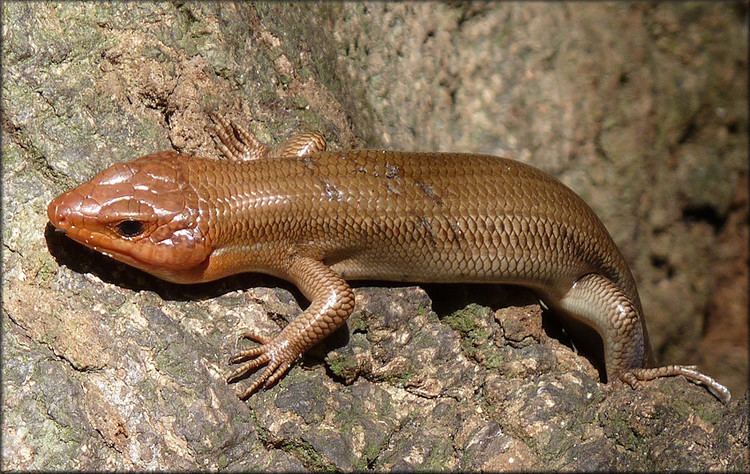 | ||
Similar Skink, Plestiodon inexpectatus, Reptile, Plestiodon fasciatus, Plestiodon | ||
The broad-headed skink or broadhead skink (Plestiodon laticeps) is species of lizard, endemic to the southeastern United States.
Contents
Description
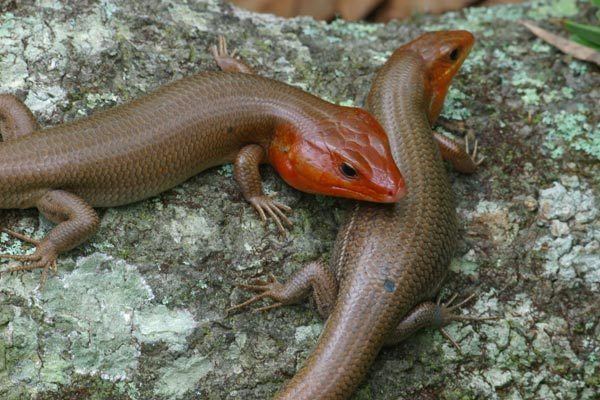
Together with the Great Plains skink it is the largest of the "Plestiodon skinks", growing from a total length of 15 cm (5.9 in) to nearly 33 cm (13 in).
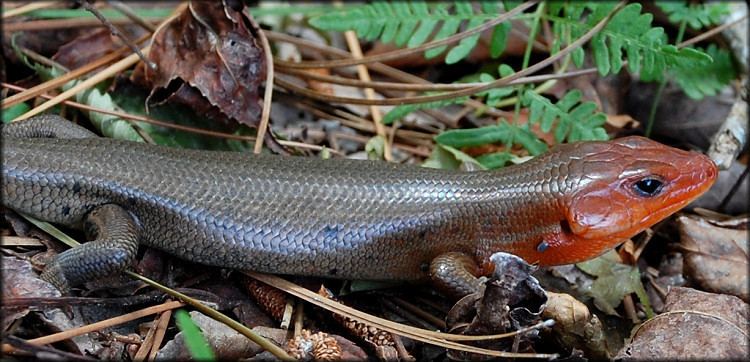
The broad-headed skink gets its name from the wide jaws, giving the head a triangular appearance. Adult males are brown or olive brown in color and have bright orange heads during the mating season in spring. Females have five light stripes running down the back and the tail, similar to the Five-lined Skink. Juveniles are dark brown or black and also striped and have blue tails.
Habitat
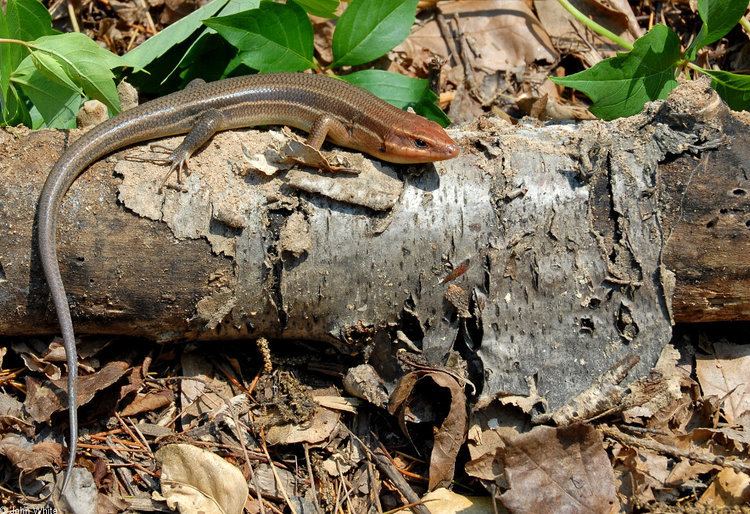
Although they do occur in urban areas, their preferred habitat is humid forest areas with abundant leaf litter, especially oak forests.
Behavior
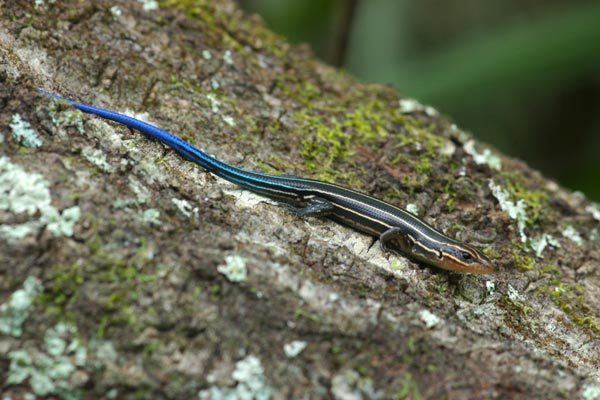
Broad-headed skinks are the most arboreal of the North American Plestiodon. They forage on the ground, but also easily and often climb trees for shelter, to sleep, or to search for food.
Reproduction
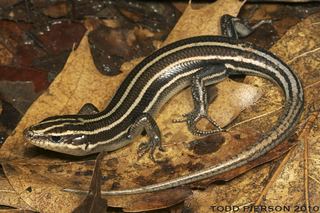
Females typically are larger than males. The larger the female, the more eggs she will lay. Males thus often try to mate with the largest female they can find, and they sometimes engage in severe fights with other males over access to a female. The female lays between 8 and 22 eggs, which she guards and protects until they hatch in June or July. The hatchlings have a total length of 6 centimetres (2.4 in) to 8 centimetres (3.1 in).
Geographic range
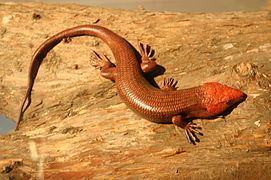
Broad-headed skinks are widely distributed in the southeastern states of the United States, from the East Coast to Kansas and eastern Texas and from Ohio to the Gulf Coast.
Nonvenomous
These skinks (along with the similar Plestiodon fasciatus) are sometimes wrongly thought to be venomous. Broad-headed skinks are nonvenomous.
